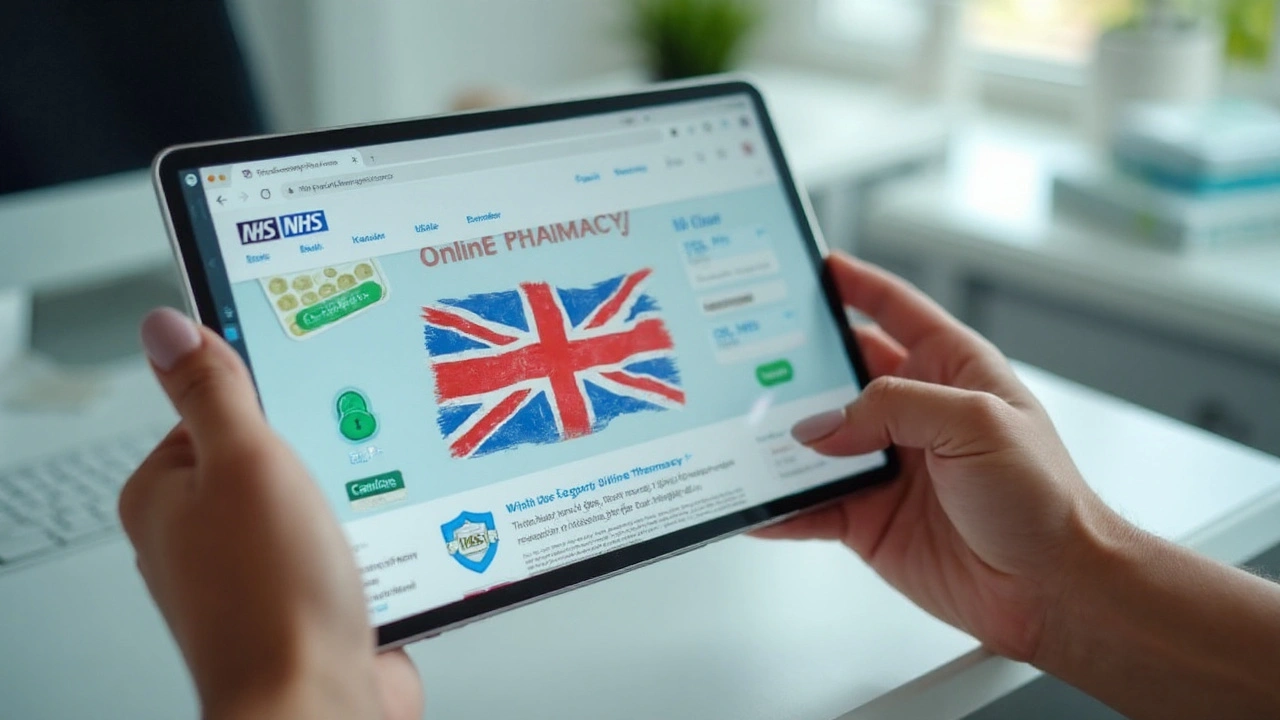Few things spike nerves more than trying to buy antibiotics online when you don’t want—or can’t—visit the doctor in person. Plenty of people are suddenly Googling where to find buy Trimethoprim/Sulfamethoxazole online thanks to last-minute infections popping up, travel delays, or plain old convenience needs. Here's the twist: the landscape for online medication shifts fast. Not every website shells out real, safe drugs. Some just want your cash and don’t care what happens to you. If you’ve ever stared at those results, feeling more lost than helped, this is for you. Ready to make sense of it all and get your question answered—both safely and legally?
What is Trimethoprim/Sulfamethoxazole and When Should You Need It?
Right out of the gate, let’s tackle the basics. Trimethoprim/Sulfamethoxazole—often sold as Bactrim or Septra—is a combo antibiotic. Doctors whip this out to fight everything from urinary tract infections (that burning feeling? Yeah, this helps) to bronchitis and even some nasty bacterial skin infections. It works by jamming up bacteria’s ability to grow and multiply, tackling the infection from two angles at once. Back in 2008, the CDC reported over five million Trimethoprim/Sulfamethoxazole prescriptions yearly in the U.S. alone, so if your doctor suggests it, you’re in big (and common) company.
Bacteria evolve quickly. So, using antibiotics like this only when you truly need it is more important than ever. Overuse is why doctors are strict—they’re not being mean, just smart. According to Dr. Anna Newton, an infectious disease specialist, “If we hand out antibiotics like candy, the bacteria just get better at dodging them. That’s a world nobody wants.”
People buy this for lots of reasons: can’t see a doctor, running into urgent symptoms, traveling, or dealing with chronic bladder infections (hello, college students). But you’ll need a real prescription, because antibiotics aren’t candy. Some online sellers play fast and loose with this, but that’s a big red flag. Responsible sellers require real scripts, and will check your info, ask about symptoms, and warn about allergies.
Knowing why you need it—and the potential impact if misused—can save you from dangerous side effects or resistance issues. Some common prescribed uses:
- Urinary tract infections (UTIs)
- Traveler’s diarrhea
- Bronchitis
- Pneumocystis pneumonia (common in patients with weakened immune systems)
- Middle ear infections (otitis media)
Whatever your reason, keep in mind: always double-check dosages and course lengths. Skipping or stopping early = not good. That’s where trusted pharmacies (and good info) come in.
How to Spot Legitimate Online Pharmacies
So, how does someone tell if they’re shopping from a safe online pharmacy and not a sketchy site from somewhere in cyberspace? It’s not as overwhelming as it seems, but you’ll need more than gut feelings. Here’s what to watch for.
The gold standard: U.S.-based online pharmacies accredited by the National Association of Boards of Pharmacy (NABP) with the “.pharmacy” extension. These pharmacies play by the rules. Just search your chosen dealer’s name on the NABP website and see if they come up. Sticking with names you can pronounce—think Walgreens, CVS, or even Amazon Pharmacy—cuts loads of risk.
But maybe you find an unfamiliar site with a bargain deal. How to check? Real pharmacies require a prescription. If they’re happy to take your order and your Visa without proof, close the tab. Legit sites also provide real pharmacists you can call or message. Prices should make sense, too. If the deal is unbelievable, believe that something’s fishy.
Here are some red flags for sketchy operations:
- No prescription required for controlled drugs
- No address or vague “Contact Us” info
- Hard to find pharmacist/customer support
- Weird payment systems (untraceable crypto or odd international wire transfers)
- Spelling mistakes or seriously outdated website design
One reputable source, the FDA, says,
"Only buy from online pharmacies that require a valid prescription and are licensed by the state board of pharmacy in your state or another trusted authority." — FDA Safe Online Pharmacy Guidelines
Curious how prices stack up? Here’s a quick peek at typical pricing if you’re shopping with mainstream, transparent sites.
| Pharmacy Name | Prescription Required? | Approx. Price (20 tablets, 800/160mg) | USA Based? | Licensed? |
|---|---|---|---|---|
| CVS Pharmacy | Yes | $22–$30 | Yes | Yes |
| Walgreens | Yes | $25–$38 | Yes | Yes |
| Amazon Pharmacy | Yes | $18–$28 | Yes | Yes |
| HealthWarehouse.com | Yes | $15–$25 | Yes | Yes |
Sites selling without a prescription might tempt you when you can’t get to the doctor or run into a delay, but sketchier sellers often peddle fakes, the wrong doses, or even antibiotics with no active ingredient. If the label isn’t quite right, or it ships in a weird generic bottle, that should set off alarms.

How to Actually Order Trimethoprim/Sulfamethoxazole Online
So you’re ready to make the jump—legally and safely. Here’s how to go about it, step by step. Some of these may sound obvious, but you don’t want to roll the dice with your health.
- Get a real prescription from your doctor. These days, a telemedicine visit (like with Teladoc or your local provider’s video call system) works fine. If you already have a prescription for a chronic thing, keep that handy.
- Pick a reputable pharmacy. Go through the NABP or stick to CVS, Walgreens, Amazon, or HealthWarehouse.com. The .pharmacy extension is a dead giveaway for legitimacy.
- Upload your prescription or ask your doctor to send it directly. Most legit pharmacies make this super easy. Fax, email, or even upload a photo right on the website.
- Fill out your medical profile. This includes allergies, other meds, and conditions. Sounds annoying, but it keeps you safer. Always tell your pharmacy about allergies—trimethoprim/sulfamethoxazole can trigger rare but serious reactions.
- Check the price breakdown and insurance. Use your insurance if you have it, but always compare with GoodRx or other coupons—sometimes cash prices and copays are in the same ballpark. Double-check how long it’ll take to ship (most deliver in under a week).
- Provide payment and shipping details. Only use secure credit cards or known payment processors. Avoid wire transfers or crypto unless you fully trust the operation (hint: most people shouldn’t).
- Track your order and check the package. When it arrives, verify the label matches your prescription—right dose, patient name, and pharmacy contact info. If anything looks or feels off, don’t take the pills. Contact the pharmacy and your doctor immediately.
A surprise bonus: some online pharmacies bundle virtual doctor reviews, so if you don’t have an up-to-date prescription, they’ll set up a quick video call for a small fee (around $30-50). Perfect if you’re traveling or short on time.
Buying antibiotics online doesn’t have to be dodgy or risky. If you follow proper steps, you’re essentially just letting your local pharmacy mail your legit medicine—way less hassle, just as safe.
Important Tips, Myths, and Safety Facts When Buying Antibiotics Online
People make plenty of wild assumptions about online antibiotics. Here’s where things get real specific—what actually works, and what to avoid like the plague.
First, lots of buyers believe that overseas ‘online doctors’ or random international pharmacies are cheaper or easier. Trouble is, there’s no guarantee about drug safety standards. The FDA has found that about half the drugs sold by some foreign online pharmacies are fake or not what they claim. That means you might be getting the wrong ingredients, no medicine at all, or dangerous stuff that’s just plain unsafe.
Quick myth-busting:
- Myth: “As long as the packaging looks right, it’s legit.” Not always! Counterfeiters copy logos but skimp on the real active drug.
- Myth: “If it’s on the front page of a Google search, it must be safe.” Nope. Ads and search rankings aren’t always about safety or legitimacy, just money spent on SEO or marketing tactics.
- Myth: “All online pharmacies are good for privacy.” Not really—some shady pharmacies turn around and sell your private health info to marketing companies or outright scammers.
If you’re taking other meds or have allergies, double-check interactions. Trimethoprim/Sulfamethoxazole can cause big problems if mixed with blood thinners, ACE inhibitors, or certain diuretics. Websites should flag these, but it’s worth a personal check.
The most common side effects for Trimethoprim/Sulfamethoxazole are:
- Nausea and vomiting
- Skin rashes
- Itching
- Rare but serious: Stevens-Johnson syndrome (skin peeling)
- Kidney complications if you have specific health conditions
Why the extra safety measures? Bad antibiotics not only leave your infection untreated, but can build up resistance in your system, making future infections harder to treat. That’s way riskier than the short-term convenience of a faster checkout. Plus, a weird batch could have extra or not enough medication—either of which can do real harm.
One tip worth repeating: pharmacies should always provide counseling. Whether via chat, phone, or video, you’re entitled to ask questions about dosages, timings, and side effects until you’re confident. Don’t let anyone rush you through a sale.
Quick checklist for buyers:
- Always need a prescription (if they don’t ask, walk away)
- Verify pharmacy accreditation (check for .pharmacy or NABP numbers)
- Only pay with traceable methods (credit/debit, known portals)
- Double-check your package and pharmacy details on arrival
- Be wary of steep discounts and miracle claims
Health and privacy both matter—so bookmark trusted resources:
- NABP safe.pharmacy site
- FDA “BeSafeRx” program
- CDC’s current info on antibiotics resistance
Navigating the online world for real, safe, and legal antibiotics is possible—you just need to know what not to do, where to look, and how to double-check before you hit that buy button. Trimethoprim/Sulfamethoxazole is common, effective, and affordable, but only if you skip the shortcuts and stick with trusted sources and good info every time.


Terry Duke
Always insist on a legit prescription before you click buy, seriously!!!
Keep screenshots of the pharmacy page, the order confirmation, and the shipping label - it helps if anything goes sideways.
Don't skip the medical profile; it exists for a reason, and your pharmacist actually wants to catch interactions and allergies before you take anything.
Pay with a traceable card or a payment service that offers buyer protection, not random crypto or wire transfers.
When the package arrives, check the pill count, the lot number, and the pharmacy contact-if any of that is missing, put the pills down and call them right away.